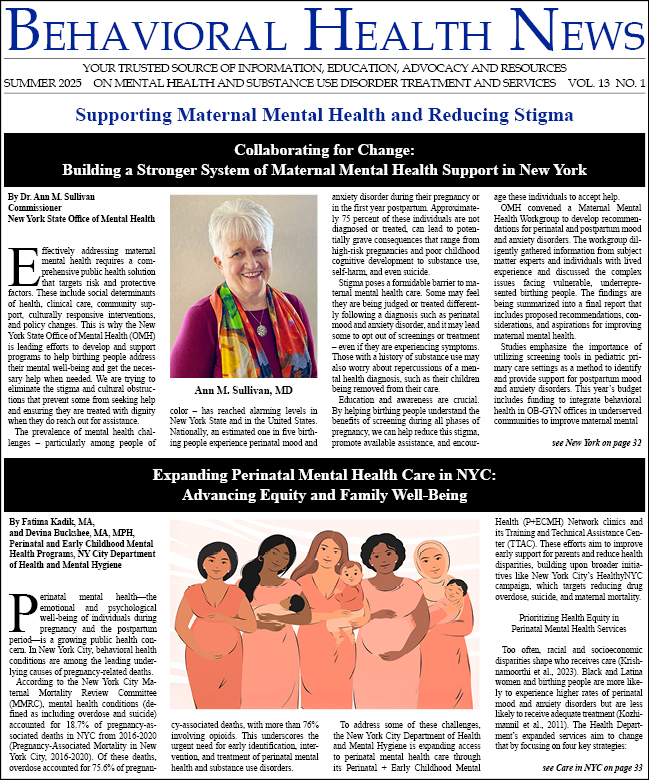-
Teen Suicide in Nassau County New York: Lifesaving Resources
The Nassau County Child Fatality Review Team (NCCFRT) is a multidisciplinary team that has functioned as a NYS approved child fatality review team as provided in Social Services Law (SSL) §422-b working under the supervision of the Office of Children and Family Services (OCFS) since December 2008....
-
River Angel: Therapy and Loss in the Early Days of AIDS
It’s been 17 years since Keith Braverman* washed down a bottle of valium with a fifth of vodka, left his wallet and keys on his kitchen table, and jumped into the Hudson River. Keith wrote one suicide note, and it was addressed to me. He attached a postcard to the note: the two embracing angels...
-
Working with Adolescents and Their Families in the Immediate Aftermath of a Suicide Attempt
Terror, anger, confusion, anxiety, and desperation are some of the feelings that family members express following a suicide attempt by a young adolescent. The mental health worker who has been working with the teen may be left to wonder - “What did I miss? What didn’t I do? What didn’t I see?...
-
Point of View – Elder Suicide: A Public Health Challenge of the Elder Boom
By the age of 88, Mr. W.* had lost most of his closest friends to death or dementia. His children had moved to other parts of the country. He saw them and his grandchildren rarely. He had retired from his long career as a teacher without finding new interests. But he and his wife were happy. They...
-
From the Publisher – Surviving Suicide: All Things Must Pass
We all walk a very thin line in our lives—a line of normal feelings and behavior. At any moment we might fall off that line and descend into the darkness of mental illness. For people with mental illness, their families and loved ones, this concept is well known. Brain chemistry, genetics, or...
-
National Action Alliance on Suicide Prevention Receives Suicide Care Report from Clinical Care and Intervention Task Force
Michael F. Hogan, PhD, Commissioner of the New York State Office of Mental Health co-chairs the Clinical Care and Intervention Task Force of the National Action Alliance on Suicide Prevention. In August of 2011 the Task Force completed a sweeping report entitled “Suicide Care in Systems...
-
Are Bridges Suicide Magnets? They Don’t Have to Be!
Bridges are suicide magnets. But they don’t have to be. San Francisco’s Golden Gate Bridge has the unfortunate distinction of being the most popular suicide destination in the world. It has been the scene of 1,500 deaths by suicide, approximately 30 per year. Results from a comprehensive...
-
The ECT Controversy
Although many believe they have been helped by electroconvulsive therapy (ECT) – in which seizures are electrically induced, usually to treat severe depression – ECT also involves serious risks. In fact, many others believe it has destroyed their lives. The risks – permanent amnesia and...
-
Recognizing Suicide Risk for Autism Spectrum Disorder
Autism Spectrum Disorder (ASD) encompasses five developmental disorders including Autistic Disorder, Asperger’s syndrome, Pervasive Developmental disorder Not Otherwise Specified (PDD-NOS), Rett’s Disorder, and Childhood Disintegrative Disorder (CDD). According to the National Institute of...
-
Understanding Suicide in New York City: The Scope of the Problem and Opportunities for Prevention
In the past two decades, New York City has seen a decline in overall suicide rates.1 The Department of Health and Mental Hygiene (DOHMH) recently announced that the suicide rate in NYC is approximately half that of the national suicide rate.1 Yet, the actual number of suicides is high:...






